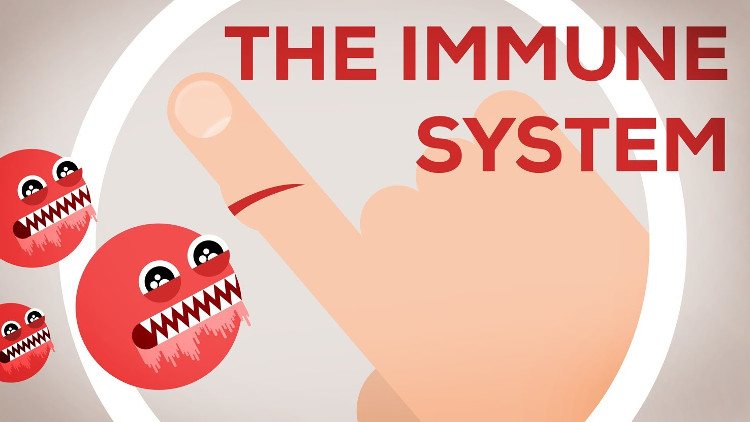After watching this video, you will see how amazing our immune system is
The immune system is always moving to help us fight off harmful agents outside the environment. If you happen to have a small wound and infection, how will your body react?
When the first barrier of the immune system breaks down - the skin - the bacteria will take this opportunity to enter the body through a cut. They are eager to feed inside our bodies and reproduce asexually by doubling their cells every 20 minutes.
Initially, these bacteria will freely fly silently, making it difficult for the sick to detect. But when a certain number of troops have been reached, they start to become more aggressive: changing the environment in the body.
At this time, macrophages with the ability to resist 100 bacteria / time will first hand.Macrophages kill bacteria by locking them into the membrane and secrete the decomposing enzyme. This process will need to be used for water to take place more smoothly. Macrophages will draw water from the blood vessels, so skin wounds will appear slightly swollen at this time.

Wound at hand.
When it is not possible to fight against bacteria alone, macrophages release proteins to transmit information about the current location and situation. At this time, neutrophils residing in the blood will receive this information and participate in the immune process.
Neutrophils have much greater power than macrophages, so when they are involved in the immune process, they kill even healthy cells. To ensure that healthy cells are not destroyed, these neutrophils have a self-decomposing mechanism after 5 days.
If both efforts are still not enough, the main brain of the immune system - tassel cells - will continue to work.
When tassel cells are activated, they sample part of the entity from the bacteria. These entities are subdivided and attached to the outer membrane of the tassel cell.Lympho T - a cell type of muscle that protects the body against pathogens - will react to these entities.
The first T lymphocyte group created after the reaction process will differentiate into "memory cells" and stay in the lymph nodes to prevent use when the disease recurs in the future. The other group continued to move to the center of the lymph node in response to Lymphocyte B - a type of body cell that produces antibodies.
After reacting to T lymphocytes, B-lymphocytes begin producing millions of antibodies after only a few minutes. These antibodies will be transported throughout the body through the bloodstream.
Billions of antibodies produced by lymphocytes now reach the infected area. They begin to carry out bactericidal, antibacterial, inhibiting new bacteria formation.
After this process, our wounds will no longer be infected and gradually recover with nature.
This is just the simplest view of a part of the immune system. If there is an opportunity to learn more deeply, we will surely encounter gold and other wonderful abilities of creation.
- Close-up of the human body's immune system is beautiful
- Foods that are harmful to the immune system
- The boy was born without an immune system
- The immune system becomes the same when we are together
- Genetic contact between the immune system and the nervous system
- New findings: Depression may be due to an overactive immune system
- Mechanism to fight infections of the immune system
- When the immune system is also aging
- 8 best movie viewing apps on Android
- Uncover the secret of the immune system of bacteria
- Decode the ability to recognize the 'super-accurate' old person of the immune system
- Going to home to help your child strengthen his immune system
 Green tea cleans teeth better than mouthwash?
Green tea cleans teeth better than mouthwash? Death kiss: This is why you should not let anyone kiss your baby's lips
Death kiss: This is why you should not let anyone kiss your baby's lips What is salmonellosis?
What is salmonellosis? Caution should be exercised when using aloe vera through eating and drinking
Caution should be exercised when using aloe vera through eating and drinking The hidden fuel of the human brain: How gut bacteria shape intelligence?
The hidden fuel of the human brain: How gut bacteria shape intelligence?  New bacteria appear in unexpected places
New bacteria appear in unexpected places  3,600-year-old cheese 'reveals' secrets of ancient food preparation
3,600-year-old cheese 'reveals' secrets of ancient food preparation  Spanish mother and daughter experts 'train' bacteria to restore paintings
Spanish mother and daughter experts 'train' bacteria to restore paintings  NASA is worried about mutant bacteria in the Space Station spreading to Earth
NASA is worried about mutant bacteria in the Space Station spreading to Earth  Identifying the deadly link between oral bacteria and cancer
Identifying the deadly link between oral bacteria and cancer 